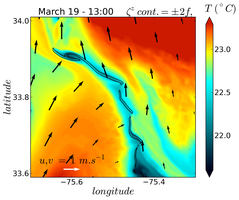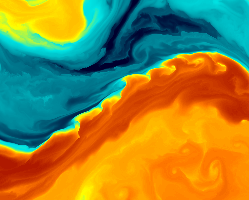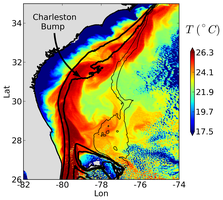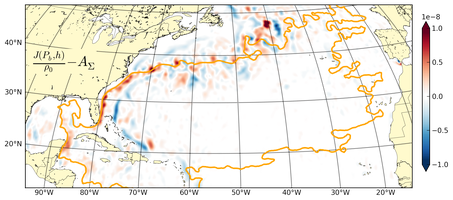Research Interests





Overview
I am focusing on ocean dynamics, and especially the understanding of submesoscale processes (1-10km) in the ocean which are a major concern for oceanic and climate modelling. Such processes are currently absent in oceanic general circulation models and global climate models and have an impact on the large scale mean circulation. By combining state-of-the-art high resolution numerical modelling with theory and idealized simulations, I am investigating the dynamics of these small scale processes and how they contribute to regional climate equilibria and intrinsic variability.
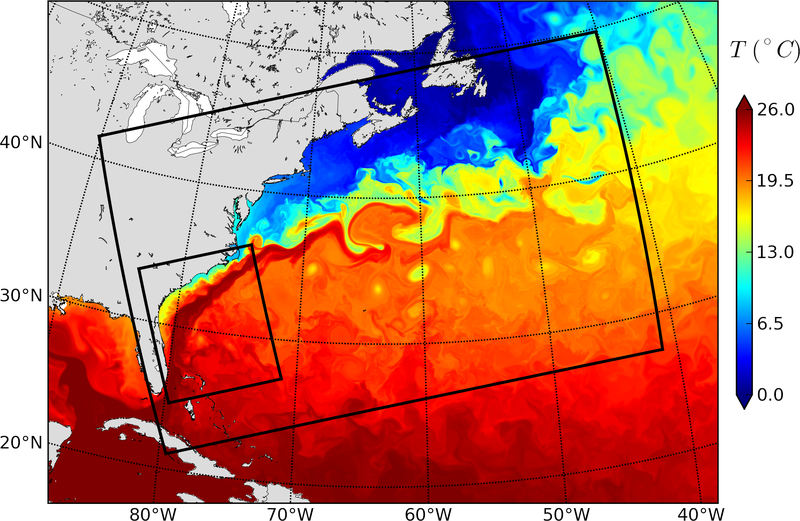
SST of the Gulf Stream from a nested sequence of simulations with horizontal resolutions 6 km, 2.5 km, and 750 m.
Series of nested regional models of the Gulf Stream system along the east coast of the United States have been developped. The range of numerical resolution of these models is between 7 km and 150 m, which allows to investigate the dynamics of the flow at a wide range of scales, from gyre-scale balance to submesoscale generation.
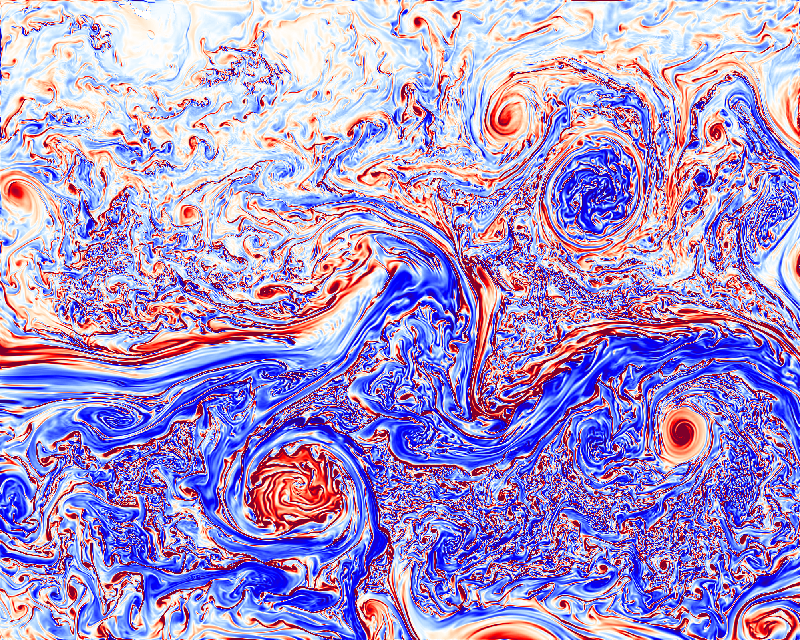
Snaphot of surface relative vorticity in a dx=500m ROMS nest over the Gulf Stream. Animation [.mov ]
Results from high resolution Gulf Stream simulations clearly highlight the emergence of smaller submesoscale currents full of sharp fronts, filaments, and coherent vortices. They are created by mesoscale strain fields that explosively sharpens lateral buoyancy gradients, which in turn become highly unstable. These structures catalyze energy dissipation for the large-scale circulation and are responsible for a large part of the vertical fluxes of mass, buoyancy, and materials in the upper ocean layers.
Submesocale processes
[Click on images for further details]
Submesocale cold filaments
Instability and mixing at the North Wall
In support of field experiments by the Office of Naval Research ("LATeral MIXing"), high resolutions simulations allow to further investigate manifestations of surface layer fronts and filaments. The North Wall of the Gulf Stream exhibits regions with intense, small scale vorticity structures that have been successfully observed using a combination of satellite and in-situ measurements and identified as submesoscale mixed-layer instabilities using high resolution simulations.
Topographic control of the Gulf Stream
[Click on images for further details]
Gulf Stream along the U.S. Seaboard
North Atlantic Gyre Balance
Western boundary currents do not imply a viscous balance against the seaboard (as in the traditional view based on models with flat bottoms and vertical sidewalls), but a nearly inviscid one. The bottom pressure torque is the term locally enabling the return flow of the wind-driven transport in western boundary currents and providing most of the overall positive input of vorticity balancing the negative input by anticyclonic wind curl on the scale of the gyre.
